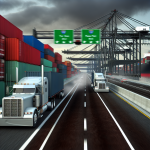Waabi has integrated its AI “Driver” into Volvo’s purpose-built autonomous truck platform, a sign that long-haul autonomy is shifting from pilot projects to OEM-level productization. The move aligns a next‑gen virtual driver with a factory-ready tractor — a pairing aimed at getting fleets something they can actually order, insure, maintain and scale, rather than a retrofit science project.
What makes this noteworthy for carriers isn’t just the tech milestone; it’s the operating model it unlocks. Factory integration means standardized builds, cleaner service procedures and clearer responsibility for uptime. For buyers, that translates into more predictable total cost of ownership and fewer integration surprises when trucks rotate through shops or swap duty cycles. In a market still wrestling with thin margins and unpredictable freight, that kind of predictability matters.
The timing also tracks a broader narrative shift inside autonomy. Industry leaders — including Waabi CEO Raquel Urtasun — are openly challenging the field’s old scoreboard of “miles driven,” arguing it’s more a proxy for a company’s age than for system safety or maturity. Instead, they’re pushing the conversation toward unit economics, deployment at scale, and the nuts-and-bolts of running reliable services. That reframing from vanity metrics to viability metrics is becoming the new filter fleets use to separate press releases from products.
On the technology mix, executives across autonomy are similarly urging buyers to ignore tribal debates over sensors. The takeaway for trucking: lidar-versus-camera isn’t the question — risk reduction and system performance are. Even players who differ in software approach are standardizing on sensor redundancy because that’s what makes the safety case (and the business case) easier to defend in front of regulators, insurers and shippers.
For fleets, Waabi’s marriage with a global OEM signals three practical shifts. First, procurement changes: purpose-built autonomous tractors rolling off an OEM line simplify spec’ing, warranty, and parts flows compared with one-off integrations. Second, operations change: 24/7 duty cycles only pay off if the hardware, software and support network are aligned — the point of building around a manufacturer’s platform rather than bolting on. Third, the commercial conversation changes: shippers will ask not just “Can it drive without a human?” but “Can it hit service levels consistently across lanes, weather windows and peak periods?” Those are questions best answered with integrated products, not pilots.
Context from the broader driverless landscape underscores the urgency. In a discussion published today, leaders at Kodiak, Nuro and Waabi were blunt: the technology hurdle is no longer the bottleneck — scaling profitably is. Fleets weighing autonomous capacity should expect providers to show repeatable operations, credible safety evidence, and clear per‑mile economics, not only demo videos and disengagement anecdotes.
The bottom line for trucking: with Waabi’s AI driver now embedded on a Volvo autonomous platform, autonomy is edging into the same procurement pipeline as conventional tractors. That won’t flip the switch overnight — lanes, regulations and customer readiness still matter — but it does change the conversation from “if” to “how fast” and “who supports it when it breaks.” For carriers, that’s the signal to start running real TCO models, pressure‑testing network design for round‑the‑clock assets, and deciding where autonomous fits first — not whether it fits at all.
Sources: FreightWaves, Business Insider
This article was prepared exclusively for TruckStopInsider.com. Republishing is permitted only with proper credit and a link back to the original source.




